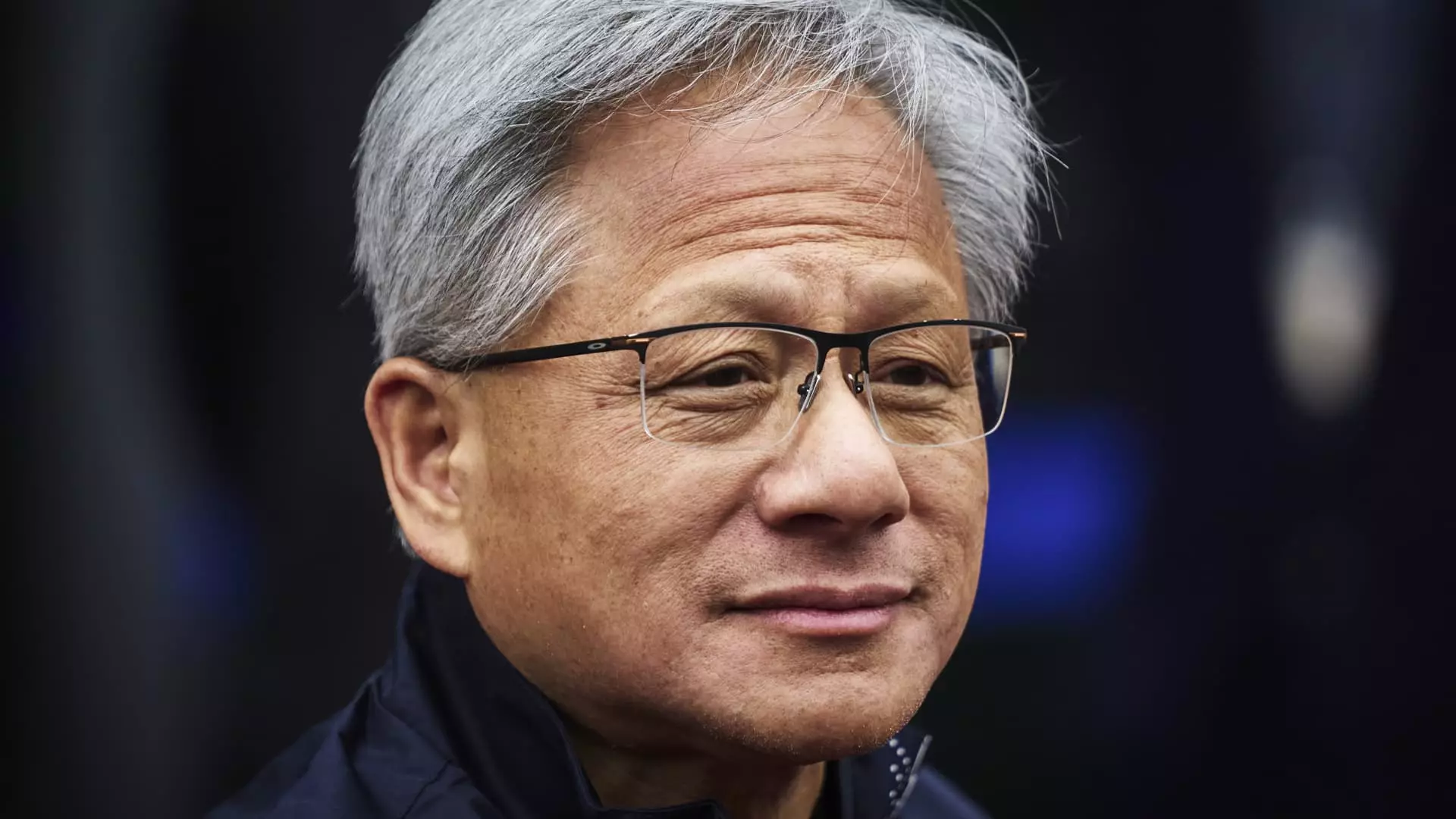As Nvidia prepares to unveil its fourth-quarter financial results, the anticipation is palpable. Set to be announced after the bell on Wednesday, these results are expected to encapsulate a spectacular fiscal year for the graphics processing giant. Analysts project Nvidia will report approximately $38 billion in sales for the quarter ended January, marking an impressive 72% increase over the previous year. This surge is part of an extraordinary trend where Nvidia has seen its sales more than double for two consecutive fiscal years, a feat few companies can boast.
Nvidia’s meteoric rise can largely be attributed to its dominance in the data center GPU market, which has become integral for deploying artificial intelligence (AI) services, such as the well-acknowledged ChatGPT created by OpenAI. In fact, the past two years have seen Nvidia’s stock soar by an astonishing 478%, thrusting it into the limelight as one of the most valuable companies in the U.S., at times surpassing a market capitalization of $3 trillion. However, the narrative appears to be shifting; as Nvidia’s stock price has stagnated recently, investors are expressing concern regarding the sustainability of this growth.
The company’s stock is currently hovering at levels reminiscent of last October, prompting scrutiny over whether key clientele, particularly in the hyperscaler cloud sector, are poised to curtail their spending after years of robust capital investments. This concern is exacerbated by recent advancements in AI technologies emerging from China, posing a significant competitive challenge.
A major factor complicating Nvidia’s financial outlook is its reliance on a select group of customers that significantly contribute to its top line. As highlighted by a report from Morgan Stanley in early February, a single customer accounted for nearly 19% of Nvidia’s revenue in fiscal 2024. Estimates suggest that Microsoft alone might account for about 35% of the spending on Nvidia’s forthcoming Blackwell AI chips in 2025, while Google and other tech giants are not far behind. This concentration of revenue can create volatility; even a minor indication that a major client intends to scale back spending can elicit sharp reactions in Nvidia’s stock price.
Recently, analysts from TD Cowen revealed that Microsoft is reevaluating its leasing arrangements with private data center operators, alongside reducing planned investments in international facilities. These revelations fed fears of a potential decline in demand for Nvidia’s essential components, which led to a 4% drop in Nvidia shares last week. Microsoft’s rebuttal, asserting a commitment to an $80 billion infrastructure investment for 2025, aims to quell investor fears but does little to overshadow the anxieties brewing within the market.
The competitive landscape Nvidia faces is increasingly crowded. Companies such as AMD are not only using their GPU technology but are also developing proprietary AI chips in efforts to reduce reliance on Nvidia’s offerings. While Nvidia retains a powerful grip on the cutting-edge AI chip market—critical for training sophisticated AI models—the development of alternative solutions poses an existential threat.
Even with ambitious projections for Nvidia’s revenues, the challenge remains whether the existing client base will absorb the current output amid the backdrop of rising competition. Monthly capital expenditures from major cloud providers like Alphabet, Meta, and Amazon may be significant, yet fluctuating investment strategies underscore the uncertainty that Nvidia must navigate.
A recent breakthrough from Chinese startup DeepSeek introduced an efficient AI model that has raised eyebrows across the industry. This model demonstrated the capability to achieve high performance without the heavy reliance on Nvidia’s GPUs, which prompted fears of a market oversupply. Nvidia suffered a sharp decline in market valuation, losing nearly $600 billion in market cap in a short span. This upheaval forces Nvidia to confront the evolving reality of AI capabilities and the implications for its product demand.
CEO Jensen Huang faces a pivotal moment during the upcoming financial report, where he will need to address these concerns and reaffirm Nvidia’s position in the market. Huang has been vocal about the “scaling law” associated with AI—suggesting that as more computational power and data are used, performance can noticeably improve. His insights into this evolving landscape may help drive Nvidia’s narrative moving forward, particularly as demands shift from training AI models to optimizing their deployment—an area that continues to require substantial GPU resources.
As Nvidia stands at this crossroads, the forthcoming financial report represents more than just numbers; it is a matter of strategic positioning in an increasingly competitive and dynamic market. The company must not only showcase its impressive revenue growth but also articulate a vision that reassures investors of its future prospects amid the rapid evolution of the AI sector. The road ahead is fraught with both challenges and opportunities, and Nvidia’s ability to navigate this terrain will ultimately dictate its ongoing success.

Leave a Reply